 Raja Ampat is one of the best tourism destination in Indonesia, located in the eastern part of Indonesia, West Papua provice. Raja Ampat is also well known for its most beautiful sea tourism destination in the world and referred as the Amazon of the World Ocean.
Raja Ampat is one of the best tourism destination in Indonesia, located in the eastern part of Indonesia, West Papua provice. Raja Ampat is also well known for its most beautiful sea tourism destination in the world and referred as the Amazon of the World Ocean.
The name “Amazon of the World Ocean” is given because the tourist attractions are located in the center of the world’s coral triangle. Raja Ampat consists of 610 islands, but there are only 35 islands are inhabited. The most amazing of Raja Ampat is the underwater panorama which remains as the best one in the world.
Islamic atmosphere of Raja Ampat is also become the main attraction. Islamic Kingdom of Ternate and Tidore who had controlled the region has given cultural color of its society. Besides sending some ulema to the region, the kingdom used to asked for help to West Papuan people to unite against the colonists who seized their natural wealth.
The Islamic culture in Raja Ampat is rarely told in historical books at schools. But,the success of Islam anchored in the hearts of Papuans provide a great wisdom to the changing of characteristics of Papuans who are similar to the typical of Arabs. This is certainly become a challenge for scholars in spreading Islamic da’wah in the region.
Also Read: Saudi Arabia Wins Bid to Host World Expo 2030
Regarding to Islamic history in the region, Raja Ampat becomes one of the main destinations of Islamic Tour Contemplating Nature which was initiated by the The Environmental and Natural Resources Development Agency of Indonesian Ulema Council (LPLH & SDA MUI) in collaboration with the Moslem Tourism Lovers Community (KWPM) and Indonesian Ministry of Tourism (Kemenpar).
The program was launched in Astindo Fair 2018, Jakarta, on March 3rd, 2018. The inaugural tour will be held on March 29 th, 2018.
Raja Ampat in the History of Islam in Nusantara
Historically, The Raja Ampat Islands in the fifteenth century were part of the territory of Tidore Sultanate, a large Islamic empire based in the Maluku Islands.
Also Read: 148 Products from Indonesia Promoted at Sarawat Superstore Jeddah
To run the government, Tidore Sultanate appointed four local kings to run the goverment wheels in Waigeo, Batanta, Salawati and Misool which are the four largest islands in the archipelago. The term of the four Kings who reigned in the archipelago was became the basis of the name “Raja Ampat”.
The regency which commemorating its anniversary on May 9th is the result of the expansion of Sorong, West Papua Province in 2003. If we look at the map of West Papua Province, the location of this regency is located in the bird beak of the clusters of Papua islands.
Raja Ampat Regency consists of approximately 610 islands with a total coastline length of 753 km. The capital city of Raja Ampat is located on Waigeo Island, the city of Waisai.
Muslim Tourism Village
Also Read: Packaging Industry Supports Halal Ecosystem
The Chairman of Environmental and Natural Resources Development Agency of Indonesian Ulema Council (LPLH & SDA MUI), Dr. H. Hayu S. Prabowo said, the program concerns on environmental conservation that will bring a positive impact for the local community and increase its own attractiveness to both domestic and international tourists.
Nowadays, the majority of population who are living in Raja Ampat are Muslims. Islam became the majority religion of the Raja Ampat people. While other religions that also exist in the area are Protestant and Catholic Christians.
Hayu explained that the religious tourism program focuses on acceleration of tourism based on community empowerment through the active role of its community with the support and full involvement of local people in planning, implementing and managing tourism business and all the benefits which are gained.
It is based on the fact that the community has knowledge about their nature and culture. So, it becomes the potential selling value to the tourists. So, the community involvement becomes an absolute things.
Also Read: Indonesia-Japan Agree on Energy Transition Cooperation
This program can also create employment opportunities for local communities, reduce poverty and increasing revenues on tourism services which they provide such as guides; transportation; selling local handicrafts, homestays for accommodation facilities and so on.
The program will also has a positive impact on the preservation of the local environment and indigenous cultures that are expected to be able to develop self-identity and pride of the local people to protect their culture and environment.
So, acceleration is needed to be done as part of an integrated development plan in an area.
Therefore, the involvement of stakeholders from community, government, businessman, religious leaders, and non-governmental organizations is expected to build a network and run a good partnership based on their respective roles and expertise.
Also Read: Dubai Expo 2020 Holds Special Event for Palestine
Meanwhile, a Muslim tourism village that can be developed in Raja Ampat with its natural beauty are Saonek, Pianemo, and Arborek Island.
Some of the religious tourism destinations that can be visited in Raja Ampat and surroundings are the sites of the spreading of Islam in the land of Papua through the historical mosques. The mosques are:
Hidayatullah Mosque, Saonek
The mosque is located on Jl. Haji Rafana, Saonek Island. It has 12,588 square meters land area, while the building area reaches 1,312 square meters. This mosque accommodates 200 worshipers.
Also Read: Indonesia Increases Excise on Tobacco Products by 2022
Characteristic of this mosque is four yellow pillars in the main room. This mosque has one main dome which dominated by white color and some small domes surroundings with green color.
The mosque was built in 1505. Islam in the region was firstly spread by Habib Rafana who is now immortalized as the name of the road to the mosque. His tomb is located on the hill of Saonek Island. He is buried with his wives and his beloved pet cat.
Great Mosque Waisai
Great Mosque Waisai is located not far from WTC (Waisai Torang Cinta) Beach, exactly on Jl. 30 Waisai Kota, next to the Raja Ampat Parliament Building.
Also Read: Indonesia to Become the Center of Sharia Economy in 2024
According to information system (simas) data, Ministry of Religious Affairs noted, this mosque has a land area of 30,000 m2 with a building area of 1800 m2. Since its establishment in 2006, this mosque always crowded by people during Friday prayers.
The mosque become the main choice of Muslim tourists to perform their worship because of its position which is on the main street of Wisai. Clean, artistic, and comfortable are the good impression for tourists who firstly come into the mosque.
Before the construction of the great mosque, Muslim community used a very simple small mosque named Nurul Yaqin which was built independently in 2003, with the first Imam, Late Ustaz Halimun Manam, then replaced by Ustaz H. M. Hanaping.
Along with the increasing number of Muslims there, Nurul Yaqin mosque was no longer able to accommodate Friday prayers or tarawih in Ramadan. This mosque is also used by children to learn to recite Al-Qur’an. The activity is performed after Maghrib Prayer.
Also Read: Indonesia to Host World Tourism Day 2022
Based on the need, the Great Mosque of Nurul Yaqin Waisai was primarily built on January 10, 2006 inagurated by the vice regent of Raja Ampat, Drs. Indah Arfan. And since 2008, this mosque began to be used by Muslim community, as well as local and foreign tourists.
Islamic Center Muadz bin Jabal
The Islamic Center is also located in Waisai, Raja Ampat District. It is the first Islamic education center and da’wah located in the easternmost island of Indonesia.
Alfarisi Labagu as the Islamic Center development committee explained, the important factor in developing the Islamic center is a reliable teachers. So, the Islamic Center opens up opportunities for Muslim activists to teach there.
Also Read: Chinese Companies Begin to Explore Lithium in Afghanistan
Alfarisi explained, the mission of building the Islamic Center to fortify the young generation in West Papua from the influence of negative impact of globalization following the growing popularity of Raja Ampat as a world-class tourist destination.
In addition, according to the data from the Ministry of Religious Affairs, there are 18 mosques and 52 mushalla scattered in Raja Ampat regency.
The implementation of the Islamic Tour program is not only to enjoy the beautiful underwater scenery under the Raja Ampat, but we can also feel the presence of Islamic da’wah in the land of Papua, even since five centuries ago along with the spreading of Islam in Java island by Wali Songo.
Several different views of how Islam firstly entered and spread in the land of Papua. Communities there believe, Islam is the first scattered in the land if compared to other religions.
Also Read: European Union Explores Cooperation in Sustainable Palm Oil Production in Riau
Patimburak Old Mosque
The Patimburak old mosque is one of the prove that Islam has been exsisting in Kokas, Fakfak, West Papua. Precisely, the mosque which was built by a scholar named Abuhari Kilian in 1870 has been functioning until now.
According to historical records, the mosque with the concept of a church is the oldest mosque in Fakfak.
During its existence, this mosque was renovated several times. However, the original form is maintained, such as the four pillars of the mosque and the bullet hole as the prove that the Japanese army used to invade the mosque.
Abubakar Sidik Mosque
The mosque was established in 1524. It has a land area of 900 square meters and a building area of 400 square meters. More than 200 people are able to be accommodated in this mosque.
The mosque is located in Kampung Rumbati, Furwagi District, Fakfak. It still has a simple model. The light blue and white colors adorn the building.
There are two floors with zinc roofed on the second floor which only cover half of the building. The extent is smaller than the building underneath. The mosque is located in near the beach with a high rock building foundation. (A/R01/P2/RS5)
Mi’raj News Agency (MINA)








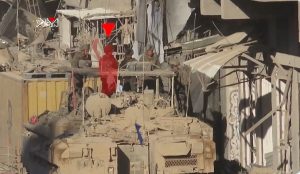

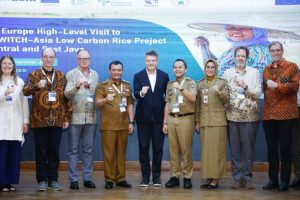
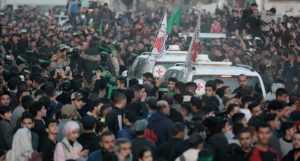



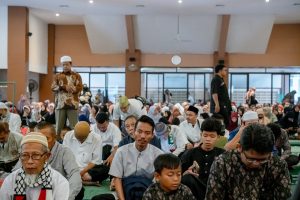

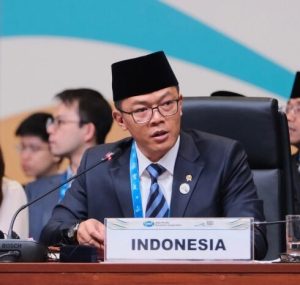









 Mina Indonesia
Mina Indonesia Mina Arabic
Mina Arabic